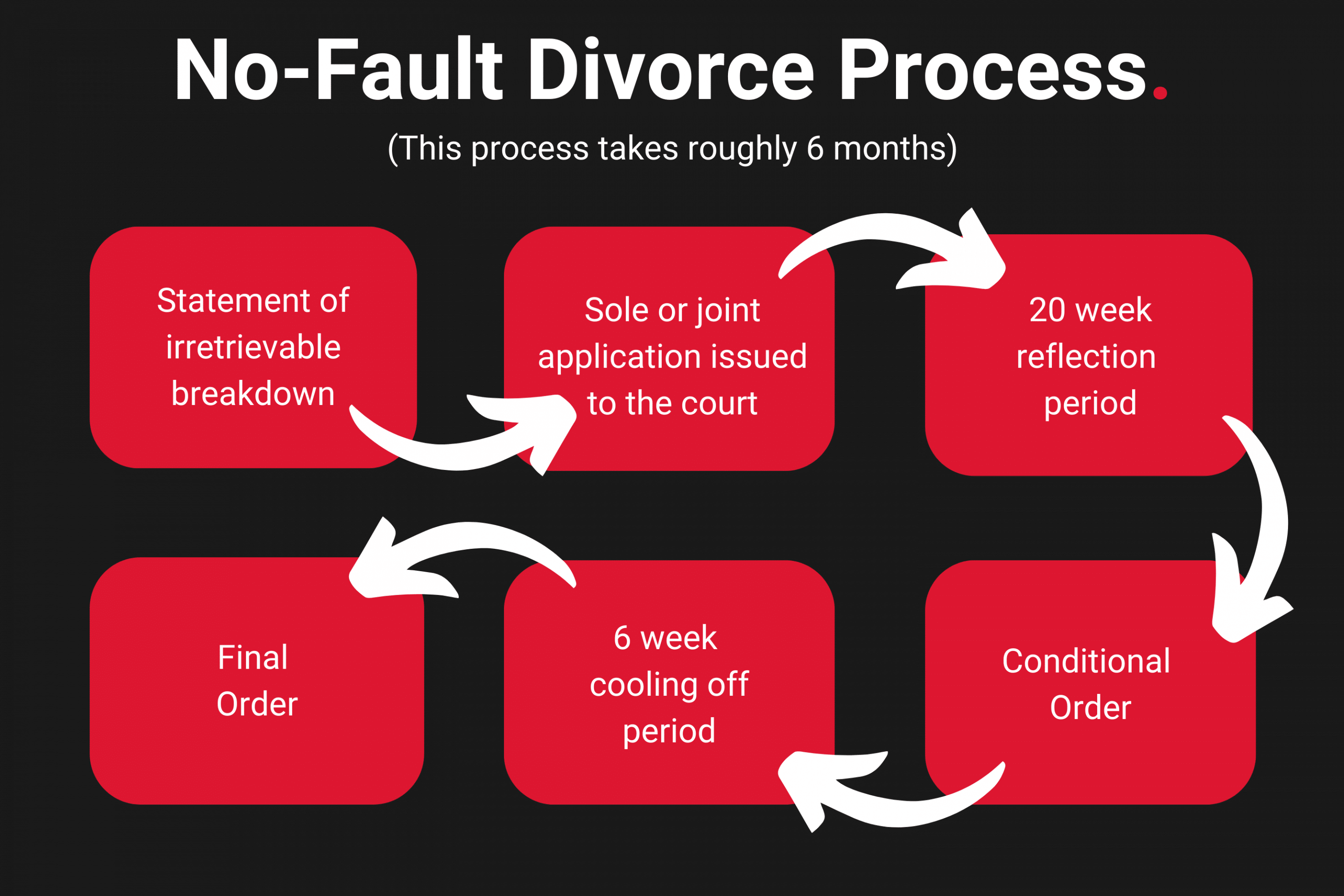In this article

The breakdown of a marriage is a challenging time for both family and friends involved. Unfortunately, it is all too common nowadays as 42% of marriages end in divorce.
Our family solicitors understand the difficulty of divorce and actively try to reduce conflict wherever possible. This has been made easier with the introduction of the no-fault divorce legislation, allowing for a more amicable and simpler process.
In this article, our solicitors break down no-fault divorce, showing you the major differences between it and the old legislation. For more information on divorce, visit our divorce page or contact us directly on 020 3007 5500.
What is a no-fault divorce?
In simple terms, a no-fault divorce is a divorce where the ending of the marriage does not require any evidence of wrongdoing by either party. Essentially, it removes the ‘blame game’ and allows couples to separate peacefully.
What was the previous divorce legislation?
Previous UK divorce legislation outlined that a party must prove an irretrievable breakdown of the marriage by satisfying one of five grounds:
- Unreasonable behaviour;
- Adultery;
- Desertion;
- 2 years separation with consent; and
- 5 years without consent.
If a party couldn’t prove that their marriage applied to one of the five categories, their divorce application wouldn’t have been eligible.

Talk to us now. Save costs further down the line.
Save yourself potentially thousands of pounds by seeking advice now. Speak to us today for more information.
Lines open 24/7

How does a no-fault divorce work?
The no-fault divorce process is now much more straightforward. Firstly, a party must produce a statement of irretrievable breakdown.
What is a statement of irretrievable breakdown?
A statement of irretrievable breakdown is a reason as to why a party is seeking a divorce. With the no-fault legislation, this statement is the only evidence you need to file for divorce.
Next, an application is submitted to the court. This is either a sole application or a joint application involving both parties.
Once this is issued, there is then a 20 week period until the next stage can be applied for. This is referred to as the conditional order and confirms that the court is in agreement that the marriage has broken down and that the final order can be applied for in due course.
The final order can be applied for 6 weeks after the conditional order is made. This finalises the divorce and means that you will now be legally separated.
From the date the application is issued, the minimum time it can take to finalise a divorce is 26 weeks (or 6 months.)

What terminology has changed through this legislation?
No-fault divorce has altered some of the prior historic terminology. The changes are as follows:
- Application (previously ‘petition’) – This is the document submitted to the court to apply for a divorce or dissolve a civil partnership.
- Applicant (previously ‘petitioner’) – This is the person who applies for the divorce. In the case of a joint application, the parties become ‘applicant 1’ and ‘applicant 2.’
- Conditional Order (previously ‘Decree Nisi’) – A document that states the court deems the divorce to be satisfactory.
- Final Order (previously ‘Decree Absolute’) – The final document that ends the marriage.
- Separation Order (previously ‘Separation Decree’) – A document that confirms that both parties from the marriage are now legally separated.
- Nullity of Marriage Order (previously ‘Decree of Nullity’) – A document that states the marriage is void or voidable. This affirms that there is no valid marriage between the two parties.
This simplification of legislative wording comes alongside making the divorce process less complicated and easier to understand.
Applying for a no-fault divorce?
Don’t worry, we’re here to give the advice you need when you need it. Just contact us to arrange an appointment.
Lines open 24/7
020 3007 5500
Can you contest a no-fault divorce?
The no-fault divorce process has removed the opportunity for a party to contest the divorce itself.
However, the divorce can be contested on one of the following grounds:
- The jurisdiction of the marriage (i.e. country of certification, where the couple lives etc.)
- If the marriage was not valid
- If any of the parties have previously undergone divorce in another country.
Whilst these factors could deny an application, the new process is much simpler and met with a lot less contention.
Are financial settlements or child arrangements affected by no-fault divorce?
In short, no. No-fault divorce is legislation that purely simplifies the process of a divorce application only.
More information on these matters can be found on our financial settlement and child arrangement pages.
How much does a no-fault divorce cost?
The costs of a no-fault divorce are based on a number of factors. For example, prices are different for joint or sole applications.
For a full breakdown of our prices, visit our divorce page.
How can Britton and Time Solicitors help?
Before making any decisions about your divorce, we recommend that you seek legal advice first. Booking an initial consultation with one of our top solicitors will provide you with legal advice on the complexities of your circumstances and your available options. As a result, you’ll be able to make an informed decision on how to approach your divorce.
For any further questions, please don’t hesitate to contact one of our solicitors directly on 020 3007 5500 or via [email protected].





0 Comments